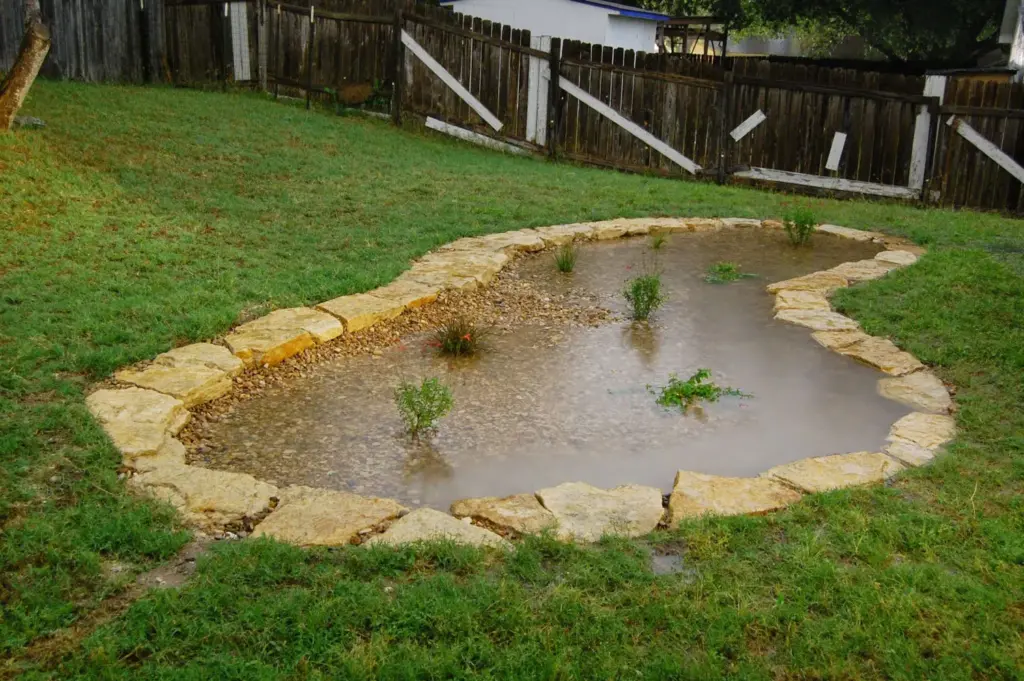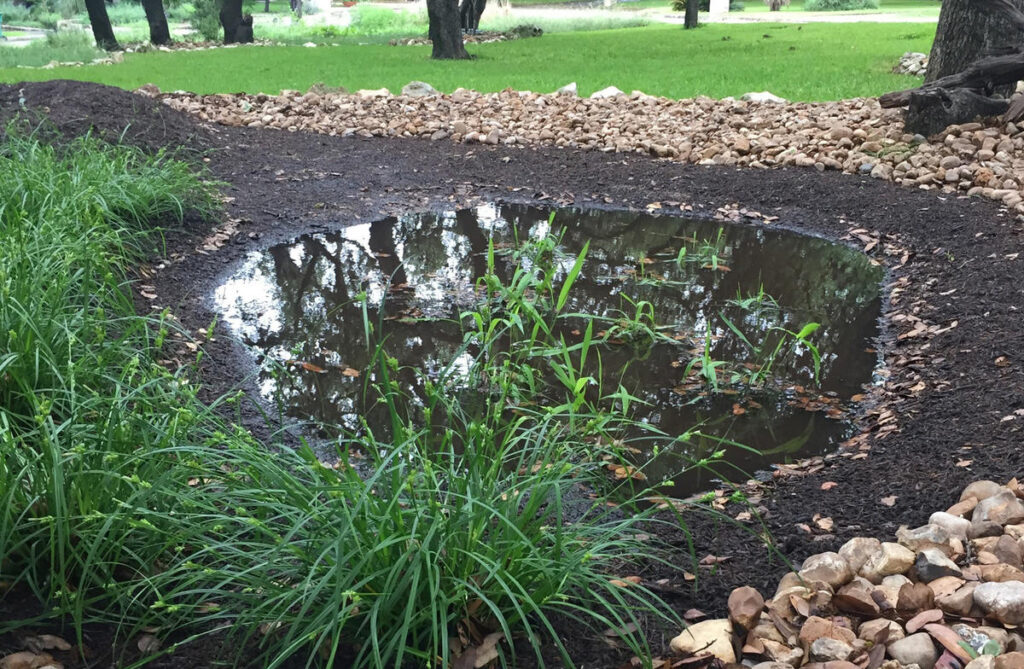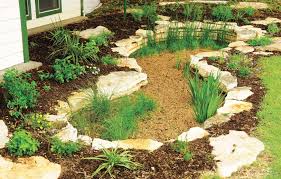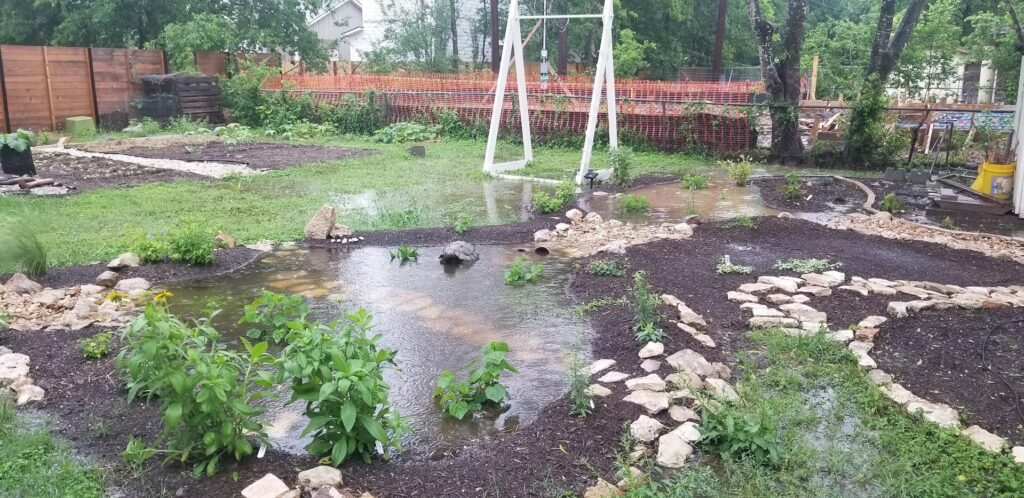Texas homeowners face a unique challenge when it comes to landscaping: balancing the need for beautiful outdoor spaces with the demands of a hot, often drought-prone climate. One increasingly popular solution is installing a rain garden. If you’re looking to conserve water, reduce runoff, and enhance your home’s curb appeal, creating a rain garden in your Texas backyard might be the perfect eco-friendly solution.
In this blog, we’ll walk you through everything you need to know about building a rain garden in Texas—from planning and plant selection to maintenance tips for long-term success.


What Is a Rain Garden?
A rain garden is a shallow, planted depression in your yard designed to collect and absorb rainwater runoff from roofs, driveways, and other impervious surfaces. Instead of letting stormwater rush into storm drains (and carry pollutants with it), rain gardens slow the water down and allow it to filter naturally through soil and plants.
Rain gardens are a powerful tool for water conservation, especially important in Texas where drought conditions are common.
Why Build a Rain Garden in Texas?
Texas weather is notoriously unpredictable. From heavy rains to extended dry spells, a rain garden can help:
Reduce stormwater runoff and prevent erosion
Filter pollutants from water before it enters local waterways
Replenish groundwater supplies
Support native pollinators and wildlife
Create a low-maintenance, attractive landscape
Plus, with the right native plants, your rain garden can thrive with minimal watering—making it a sustainable gardening option for homeowners across Texas.
The first step in building your DIY rain garden is selecting a location in your yard. Here’s what to look for:
Downhill from a runoff source, such as a gutter or driveway
At least 10 feet away from your home’s foundation
A low area that already collects water or can be easily shaped
Full or partial sun exposure (depending on plant choices)
Avoid areas with compacted soil or near large tree roots. You’ll also want to do a simple percolation test to make sure the soil drains well—dig a hole, fill it with water, and ensure it drains within 24 hours.
Size and shape depend on your yard’s layout and how much runoff you expect. A good rule of thumb is to make the rain garden one-third the size of the area draining into it.
Common shapes include oval, kidney, and teardrop. Be sure to include a shallow basin (usually 4–8 inches deep) with gently sloping sides to help water pool and soak in slowly.
Once you’ve marked out the shape:
Dig out the basin to your desired depth.
Amend the soil if needed with compost or sand to improve drainage.
Create a berm (raised edge) on the downhill side to keep water contained.
Add a rock-lined inlet to guide runoff into the garden.
Consider a small overflow outlet in case of heavy storms.
Texas is home to a wide variety of native plants that are ideal for rain gardens. Choose plants that can tolerate both wet and dry conditions, and group them by water needs:
Best Native Plants for Texas Rain Gardens:
Blue mistflower (Conoclinium coelestinum)
Black-eyed Susan (Rudbeckia hirta)
Switchgrass (Panicum virgatum)
Gulf Coast muhly (Muhlenbergia capillaris)
Texas frogfruit (Phyla nodiflora)
Eastern purple coneflower (Echinacea purpurea)
Aim for a mix of grasses, flowering perennials, and shrubs to provide year-round interest and support pollinators.
Plant your selections in layers:
Center: Plants that tolerate standing water
Middle: Moderately water-tolerant species
Edge: Drought-tolerant varieties
Once planted, add a 2–3 inch layer of mulch to retain moisture, suppress weeds, and improve soil health. Avoid mulch that floats easily, like pine bark.
Rain gardens are low maintenance, but they do need some care:
Water during dry spells until plants are established
Weed regularly, especially in the first year
Refresh mulch annually
Check for erosion or clogging after heavy rains
With time, your rain garden will become a thriving, self-sustaining part of your landscape.
Final Thoughts
Building a rain garden in your Texas backyard is one of the best ways to embrace eco-friendly landscaping, conserve water, and support local biodiversity. It’s a practical DIY project that pays off with beautiful, functional, and sustainable results.
Whether you’re dealing with flash floods or dry seasons, a rain garden offers a smart, long-term solution tailored to Texas’ unique climate.


